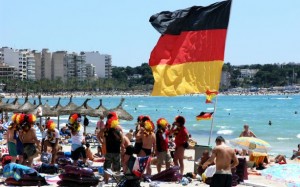 Population of Germany
Population of Germany
Based on the total number of births, total number of deaths, net migration rates, and the population from last year, the current population in 2014 of the Federal Republic of Germany is estimated to be about 82,678,629. As a result, Germany is the sixteenth-most populous country in the world, behind Egypt, but ahead of Iran. Germany is one of the few larger countries that is experiencing a population decline instead of a population increase. At the end of 2013, the population of Germany was estimated to be about 82,726,626. Therefore, since the end of 2013, there has been a population decline of about 47,997 people or a population decline rate of about 0.05%. The population decline may come as a result of one of the lowest birthrates in the world, of about 8.33 births per 1000 inhabitants. Despite this population decline, Germany remains as the most populous country in the European Union and the second-most populous country in Europe, behind Russia. Based on the total land area and the total current population, the population density of Germany is estimated to be about 231.48 people per square kilometer or 599.79 people per square mile.
Geography of Germany
Nine countries border Germany: on the north, Denmark: on the east. Poland and the Czech Republic; on the south, Austria and Switzerland; on the southwest, France and Luxembourg; and on the northwest, Belgium and the Netherlands. Overall, Germany is made up of sixteen states. The most populous state is the North Rhine-Westphalia and the least populous state is Bremen. The largest state in terms of area is Lower Saxony and the smallest state in terms of area is Bremen. The highest point in Germany is at the Zugspitze, which reaches 9,718 feet. The major rivers in Germany are the Rhine, Danube, and the Elbe. Lastly, some major natural resources of the country are iron ore, potash, uranium, copper, natural gas, and arable land and water.
Government of Germany
Germany is considered to be a federal, parliamentary, representative, democratic republic. The structure of the political system is laid out in the main constitutional document known as the Grundgesetz, established in 1949. The fundamental rights and principles established in this document include human dignity, separation of powers, and federal structure. The top three ranking officials in the government are the President, President of the Bundestag, and the Chancellor. The President is mainly concerned with the representative powers and is elected by a group of members from the Bundestag and state delegates. The President of the Bundestag is elected by the Bundestag and oversees the legislative body. The President of the Bundestag also appoints the Chancellor, who is considered to be the head of the government and has the executive power. The parliamentary body is made up of the Bundestag and the Bundesrat. The members of the Bundestag are directly elected and the members of the Bundesrat are selected from each state cabinet. Lastly, the judicial body is the Bundesverfassungsgericht, which means Federal Constitutional Court in German and is the German Supreme Court, which is solely responsible for constitutional matters. There is a specific court system for civil and criminal cases.
German Economy
The economy of Germany is considered to be a social market economy. It is the largest national economy in Europe, the fourth largest by nominal Gross Domestic Product, and the fifth largest by Purchasing Power Parity. The largest sector of the German economy is the service sector, making up 71% of the economy. The industry sector makes up 28%, while the agricultural sector only makes up 1% of the economy. In July of 2013, the official unemployment rate was estimated to be about 6.6%. As a member of the European Union, the unit of currency is the euro, which was adopted by Germany on January 1, 2002. Germany is considered to be the world’s top location for any sort of trade fair. Lastly, the largest company (by revenue), as of 2011, is Volkswagen AG, which achieved 15.8 billion Euros of profit. It also has the highest number of employees of any other company in Germany.
German Transportation Network
Because of Germany’s position in Europe, the country is ideal for a large transportation network in order to assist in European travel. The Autobahn is considered the third-longest motorway network (and is also known for a lack of a speed limit). The country also has a high-speed train network throughout the various parts of the country, operated by the InterCityExpress. Germany is also made up of many large airports, including Frankfurt Airport, Munich Airport, and Hamburg Airport.
Language in Germany
The official language of Germany is German, which is also the most widely spoken language in the country. In fact, German is considered to be one of the official languages of the European Union and also as one of the official working languages of the European Commission. Other than German, Germany recognizes a few other minority languages, including Danish, Romany, and Frisan, protected by the European Charter for Regional or Minority Languages. Lastly, about two-thirds of the population claims to have the ability to communicate in at least one language other than German and about 27% of the population can communicate in at least two languages other than German.
Education in Germany
In Germany, education, for the most part, is left to each individual state and is considered to be a part of the constitutional sovereignty of the states. The Ministry of Education for each state employs the teachers. School attendance is required for about 9 years, starting with the primary education system and working through the secondary system. There are three traditional types of secondary education: Gymnasium, Realschule, and Hauptschule. Gymnasium is intended for the brightest students that aspire to attend university. In order to attend university, the students must pass the Abitur, an entrance requirement for almost every university. The Realschule program is a six-year program for intermediate students. The Hauptschule focuses on vocational training to help train for the working world. Lastly, after students have taken the Abitur and have been admitted to a university, in order to attend the school, a student must pay a very minimal cost per semester for tuition. Because of this cheap cost of tuition, attending a university is quite frequent in Germany.
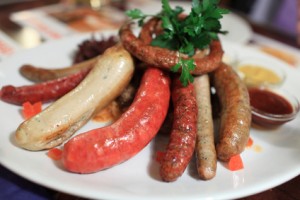 Health in Germany
Health in Germany
The oldest universal health care system is in Germany. Every person is required to have health insurance, as of 2009. While some people opt out of the government funded insurance plan in order to pursue private insurance, the majority of Germans use the government-funded health insurance. 77% of health care is government-funded, while 23% is privately funded. The life expectancy of German citizens is 77 years for men and 82 years for women. It also has a very low infant mortality rate of 4 per 1,000 births. Lastly, as of 2010, the leading cause of death was cardiovascular disease (41% of deaths), followed by malignant tumors (26% of deaths).
Germany Profile
Demographics of Germany
The largest ethnic group in the Federal Republic of Germany is the native German group, which makes up about 92% of the population. The next largest group is the Turks, which make up about 2.4% of the population. The remainder of the population is made up of Greeks, Poles, Russians, Spaniards, Serbo-Croatians, and Italians. The official language of the country is German. German is one of the 23 official languages in the European Union. There are many minority languages that are also recognized by the government.
Geography and Climate of Germany
Germany is in Western and Central Europe, with Denmark bordering to the north, Poland and the Czech Republic to the east, Austria and Switzerland to the south, France and Luxembourg to the southwest, and Belgium and the Netherlands to the northwest. The territory covers 357,021 km2 (137,847 sq mi), consisting of 349,223 km2 (134,836 sq mi) of land and 7,798 km2 (3,011 sq mi) of water. It is the seventh largest country by area in Europe and the 62nd largest in the world.
Germany’s climate is moderate and has generally no longer periods of cold or hot weather. Northwestern and coastal Germany have a maritime influenced climate which is characterized by warm summers and mild cloudy winters. Most areas on the country’s North Sea coast have midwinter temperatures about 1.5°C or even higher. Farther inland, the climate is continental, marked by greater seasonal variations in temperature, with warmer summers and colder winters. Temperature extremes between night and day and summer and winter are considerably less in the north than in the south. During January, the coldest month, the average temperature is about 1.5°C in the north and about -2°C in the south. In July, the warmest month, it is cooler in the north than in the south. The northern coastal region has July temperatures averaging between 16°C and 18°C; at some locations in the south, the average is almost 20°C or even slightly higher.
Religion in Germany
The largest religious group in the Federal Republic of Germany is Christianity, making up about 65% of the population. Of this Christian population, there is an equal amount of Lutherans, Calvinists, and Catholics. However, the population is mainly based on location. Also, there are minority groups of Judaism and Islam found throughout the country.
 Sports in Germany
Sports in Germany
The two most popular sports in the Federal Republic of Germany are soccer and tennis. The German National team has been very successful in many World Cups, especially recently. Other popular sports include volleyball, basketball, and field hockey. The Germans have frequently participated in the Olympic games and have proven to be very successful at the events.
Germany’s Population Demographic Challenge
Historical Population of Germany
The population of the Federal Republic of Germany has gone through many different stages of growth throughout the last half of a century. The population has gone through periods of oscillating growth, increasing at points and then decreasing and then increasing and decreasing again. Currently, the population is on the decreasing stage.
| Year | Population (millions) |
| 1960 | 72.81 |
| 1965 | 75.96 |
| 1970 | 78.17 |
| 1975 | 78.67 |
| 1980 | 78.29 |
| 1985 | 77.68 |
| 1990 | 79.43 |
| 1995 | 81.68 |
| 2000 | 82.21 |
| 2005 | 82.47 |
| 2010 | 81.78 |
| 2011 | 81.8 |
Projected Population of Germany
The population of the Federal Republic of Germany is expected to continue the decreasing trend that it has exhibited over the last few years. The birth rates of the country are quite low, especially compared to the death rates. The birth rates will only range from about 8.7 births per 1000 people to about 9.8 births per 1000 people. In contrast, the death rates will range from about 11.6 deaths per 1000 people to about 15.8 deaths per 1000 people. However, the net migration rates throughout the next 37 years will remain positive. Nonetheless, the population will still have a negative growth.
| Year | Population (millions) | Percent Increase |
| 2015 | 80.656 | 0.32% |
| 2020 | 79.791 | -1.1% |
| 2025 | 78.971 | -1.0% |
| 2030 | 78.043 | -1.2% |
| 2035 | 76.829 | -1.6% |
| 2040 | 75.340 | -1.9% |
| 2045 | 73.625 | -2.3% |
| 2050 | 71.992 | -2.2% |



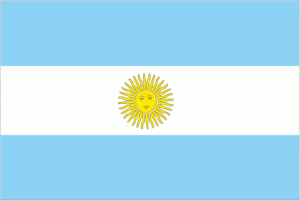 Population of Argentina 2014
Population of Argentina 2014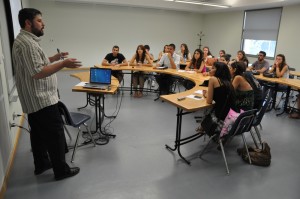 Education in Argentina 2014
Education in Argentina 2014 The population of the
The population of the 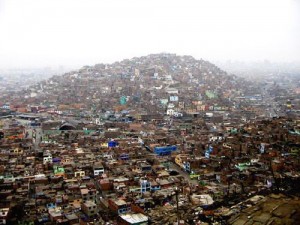 Poverty in Peru 2014
Poverty in Peru 2014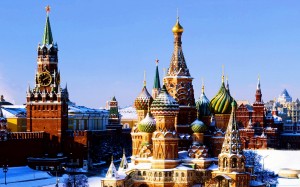 Population of Russia 2014
Population of Russia 2014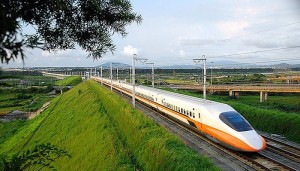 Transportation in Russia 2014
Transportation in Russia 2014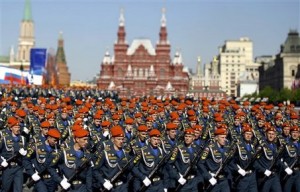 The next holiday is on May 1st, which is the Spring and Labor Celebration. This receives its origin from the Chicago worker strikes in 1886, demanding shorter working days. It became a holiday for the first time on May 1st, 1890. Victory Day is the most celebrated and loved holiday of Russia, remembering all of the soldiers that died in World War II. This day, Victory Day, is held on May 9th. Russia Day, June 12th, celebrates when the Declaration of the Sovereignty of the Russian Federation was accepted in 1991. Lastly, November 4th celebrates Civil Unity Day, which is the day celebrating Moscow’s liberation from the Polish armies in 1612.
The next holiday is on May 1st, which is the Spring and Labor Celebration. This receives its origin from the Chicago worker strikes in 1886, demanding shorter working days. It became a holiday for the first time on May 1st, 1890. Victory Day is the most celebrated and loved holiday of Russia, remembering all of the soldiers that died in World War II. This day, Victory Day, is held on May 9th. Russia Day, June 12th, celebrates when the Declaration of the Sovereignty of the Russian Federation was accepted in 1991. Lastly, November 4th celebrates Civil Unity Day, which is the day celebrating Moscow’s liberation from the Polish armies in 1612.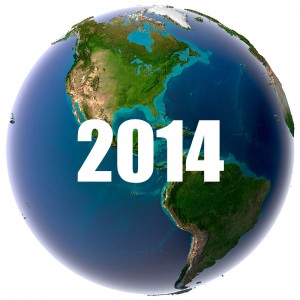 World Population 2014
World Population 2014